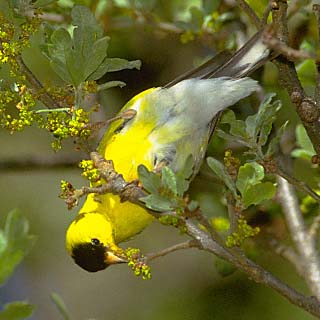ESC 452,
Fall Quarter 2003
Field
Ornithology

Assignments
1. In-lab computer use
For some indoor labs, there will be a laptop computer available so that you can use Thayer's Birds of North America to review bird identifcations and take advantage of the wealth of other information about birds on the CD. In the "Lists" portion of the CD, all new birds presented at a particular lab day are listed according to the date of the lab. This CD is a good way to review the birds, particularly with regard to sex and age differences in plumage, and natural history.
Instructions for running the Thayer Birds of North America CD:
To run the CD, follow the simple procedure outlined below:
1. Double click on the Birds of North America icon on the computer's desktop.
2. Click on the flying egret in the middle of the Birds of North America window. Wait 2-3 seconds.
3. The Red-throated loon account will show up, click on "lists" in the top middle portion of the window.
4. Go to "Select another list to display below" and select the date of the lab you want to review. The list of species will appear in the window. Simply click on the species of interest to view.
5. Return to the "Lists" window each time you want to view a species.
6. When you are finished, just go to "File" and click on "Exit".
2. Lab sessions
In a typical lab time, new groups of species will be presented by either the instructor or graduate teaching assistant. Each taxonomic group will be introduced by pointing out recognizeable characteristics. After all the species of the day have been presented, you are free to go over them until you feel comfortable with your ability to identify them (or you just get tired of looking at them). You are free to examine previously presented species by looking at them in the skin cases and/or using the laptop computer.
3. Independent student research
Students should develop a research project on any aspect of bird biology that can be done in the field. Some examples of this kind of project include: 1) documenting the feeding ecology of a species; 2) comparing the feeding of two closely related species (e.g. black-capped and chestnut-backed chickadees); 3) study avian use of an area; 4) study bird interactions around a bird feeder; 5) study the effect of weather on habitat use (e.g. waterfowl).
You need to create a research question(s) or pose hypotheses to test in the field. Don't underestimate the amount of time required to do your study and its subsequent write-up. Do some reading in ornithological journals to see how the authors posed the questions, answerethem and presented the data.
You should decide on the direction of your project during weeks 1-2. Please discuss this with me before you proceed. Make sure your study allows you to quantify your observations.There are two required products from your research: 1) a short oral presentation summarizing your study (given during the period Dec 1-10), and 2) the written report which is due December 10.
Last Updated:
09/16/03
Contact the instructor at: auklet@u.washington.edu